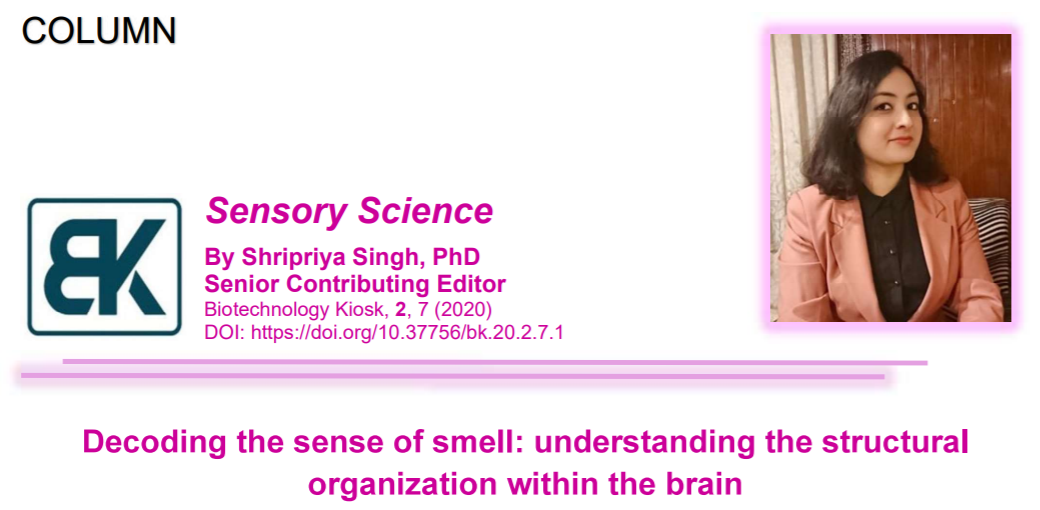Senolytics and Healthy Lifespan
August 30, 2020Abstract2 vol2 issue 7
August 30, 2020
Abstract
The olfactory sense is a potent sensory tool which helps us perceive our environment much better. However, smells despite being similar have different impacts on individuals. What makes one odor categorically different from the other and why do people have a unique and personalized experience with smell is an answer that needs to be addressed. In the present article we have discussed the research in which neuroscientists have decoded and described how the relationships between different odors are encoded in the brain. How the brain transforms information about odor chemistry into the perception of smell is a major highlight of this publication. Carefully selected odors with defined molecular structures were delivered in mice and the neural activity was analyzed. It was observed that neuronal representations of smell in the cortex reflected chemical similarities between odors, thus allowing the brain to categorize scents. The study has employed chemo informatics and multiphoton imaging in the mouse to demonstrate both the piriform cortex and its sensory inputs from the olfactory bulb represent chemical odor relationships through correlated patterns of activity. The research has given us cues in the direction of how the brain translates odor chemistry into neurochemistry and eventually perception of smell.
Keywords: smell; odor; olfactory bulb; piriform cortex; brain
*E-Mail: shripriyasingh@gmail.com
To cite this article: Singh S; Decoding the sense of smell: understanding the structural organization within the
brain, Biotechnology Kiosk, Vol 2, Issue 7, PP: 4-9 (2020); DOI: https://doi.org/10.37756/bk.20.2.7.1